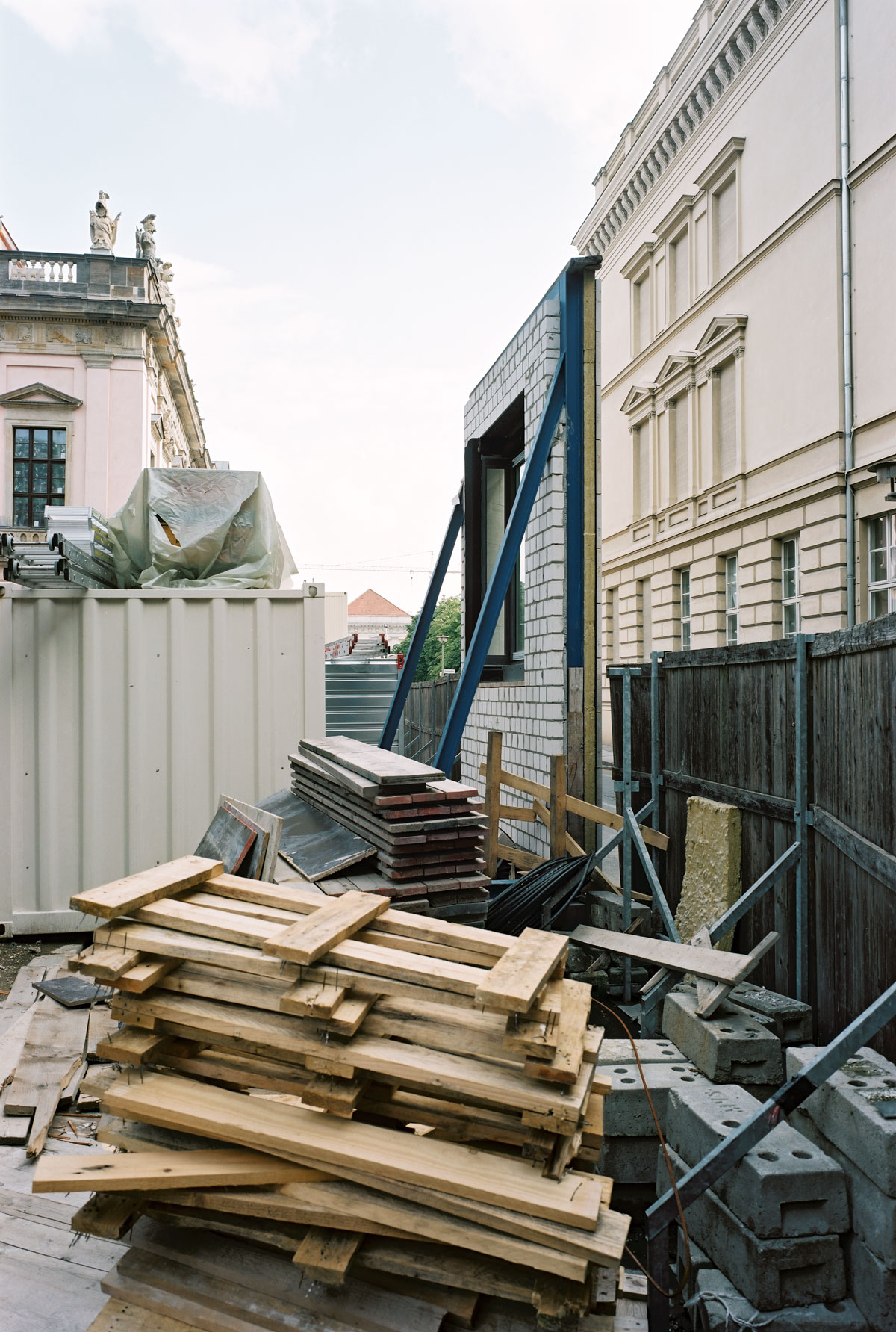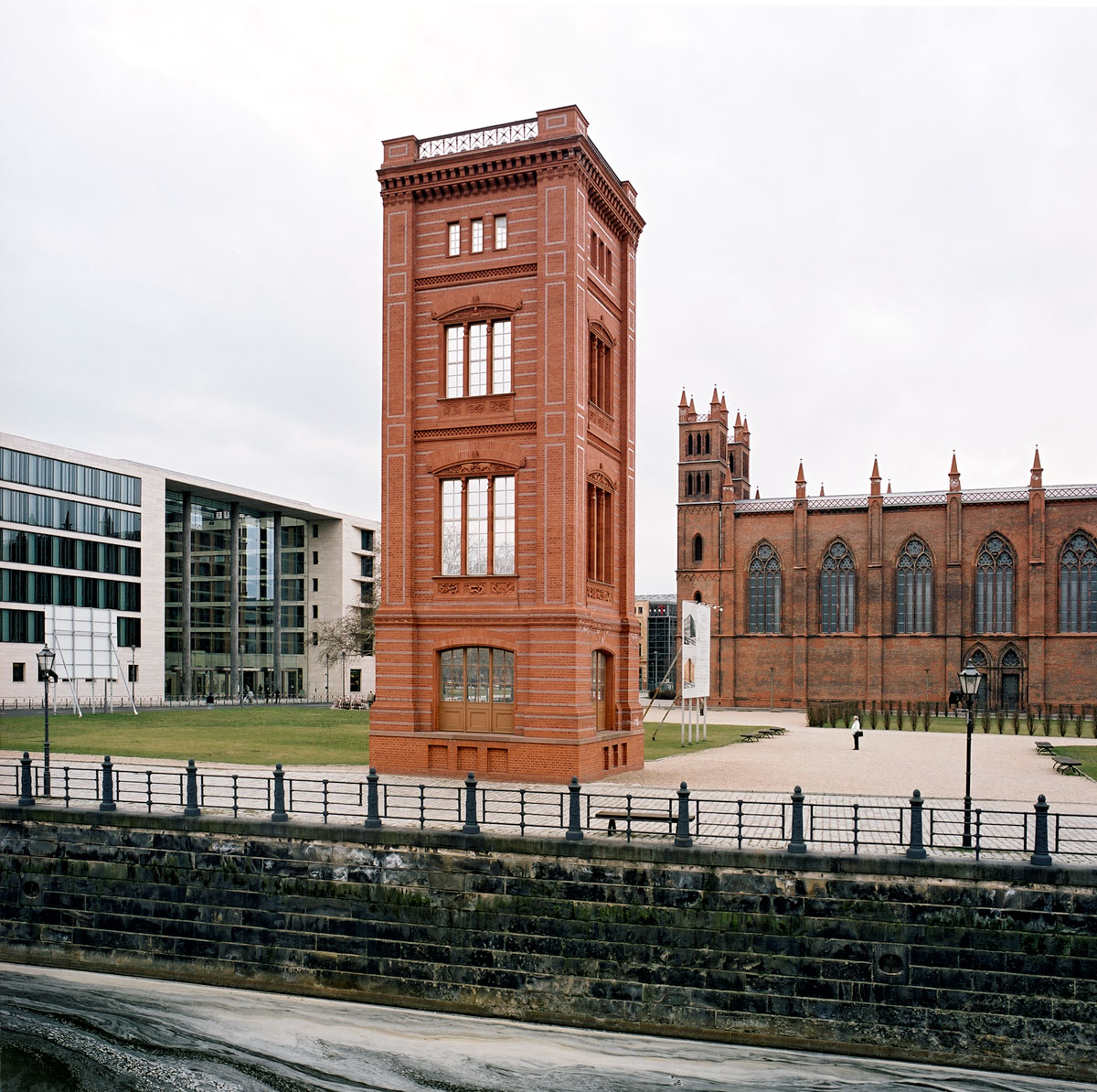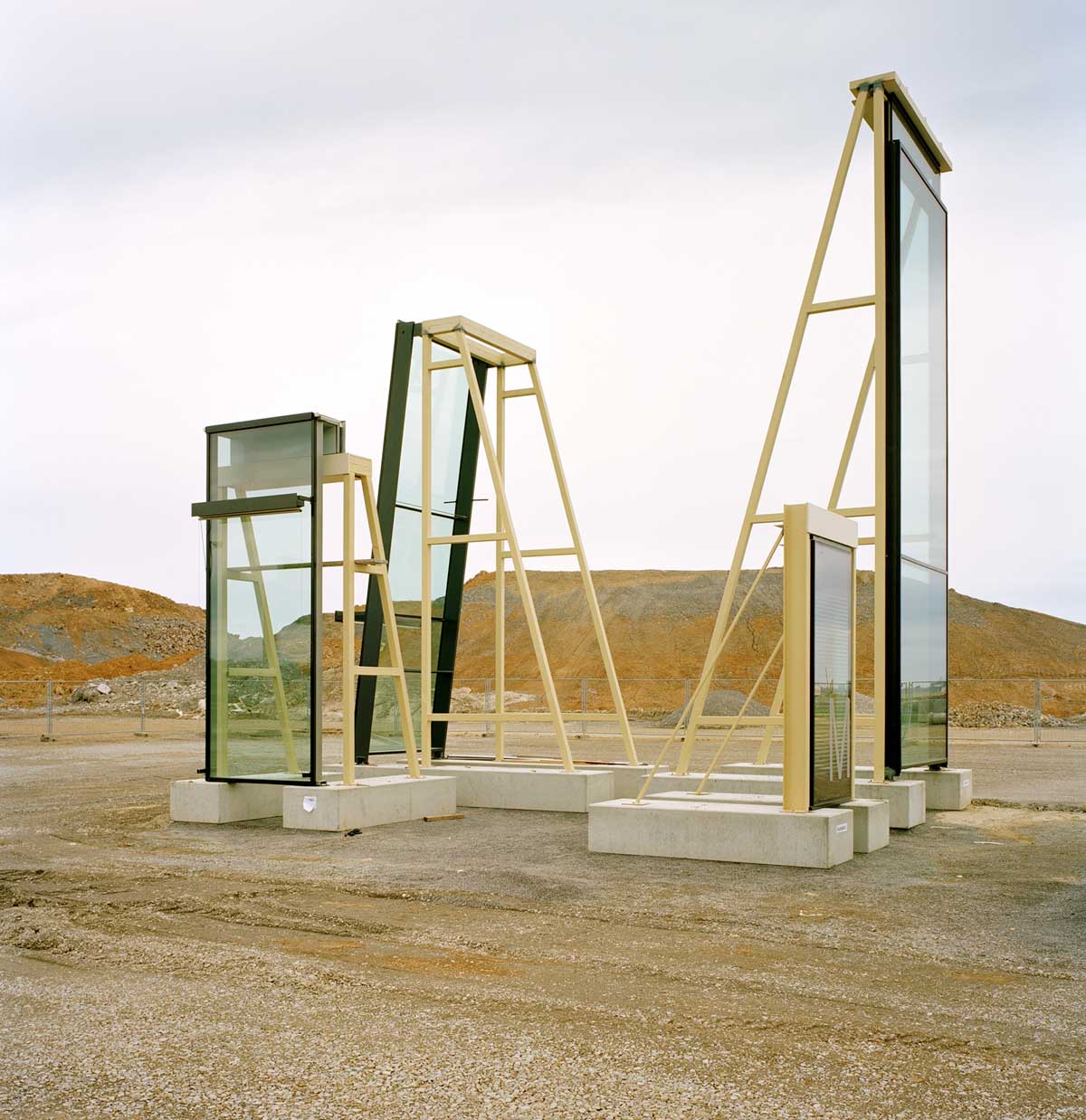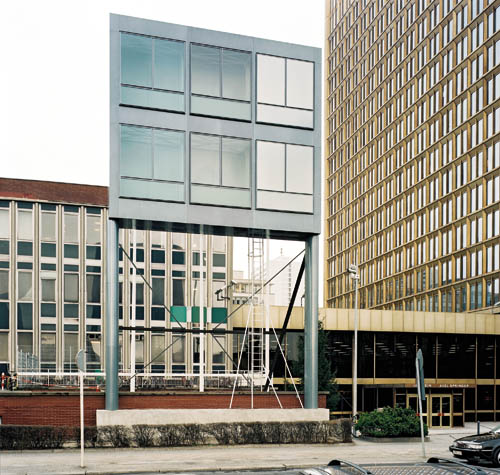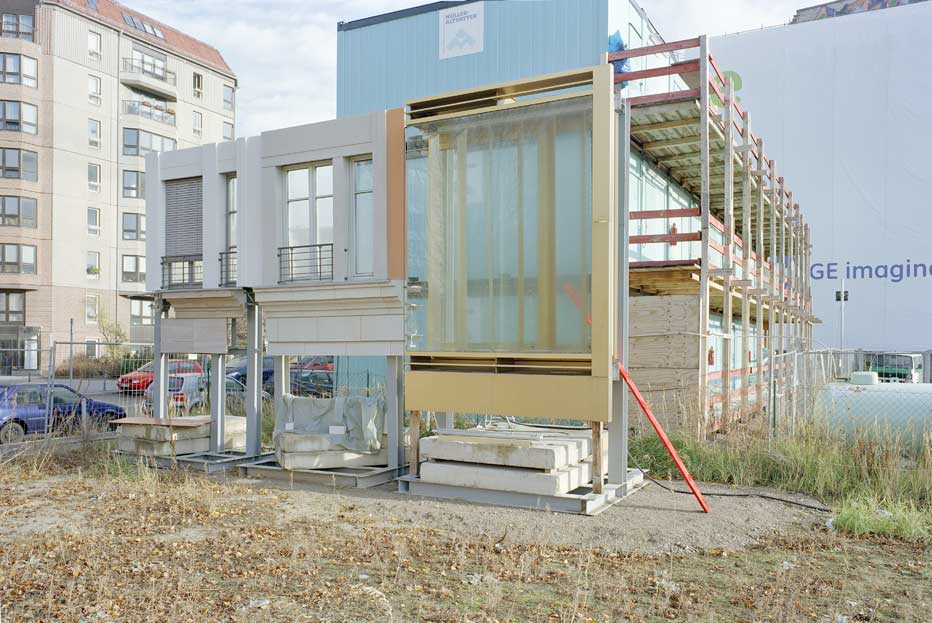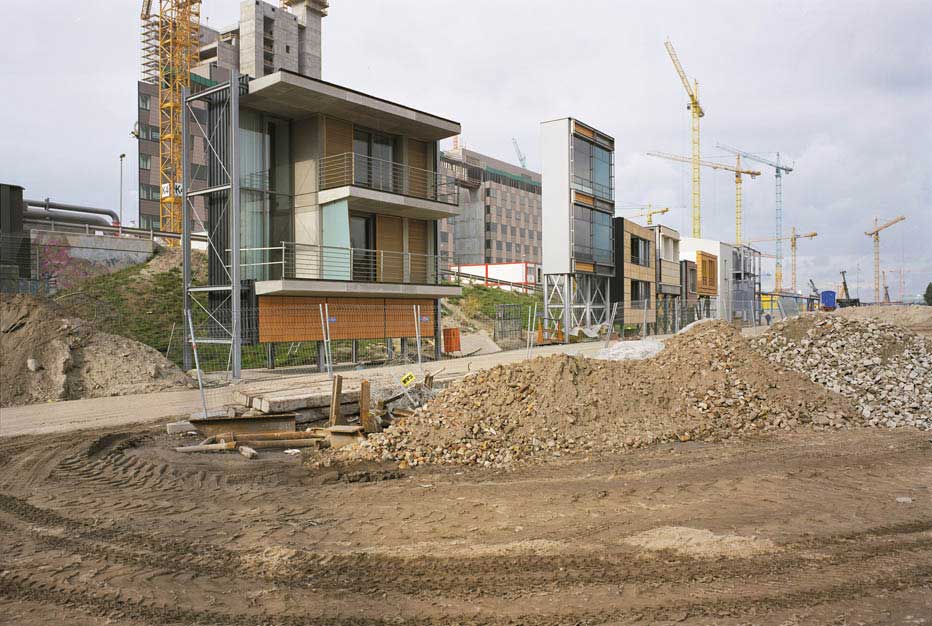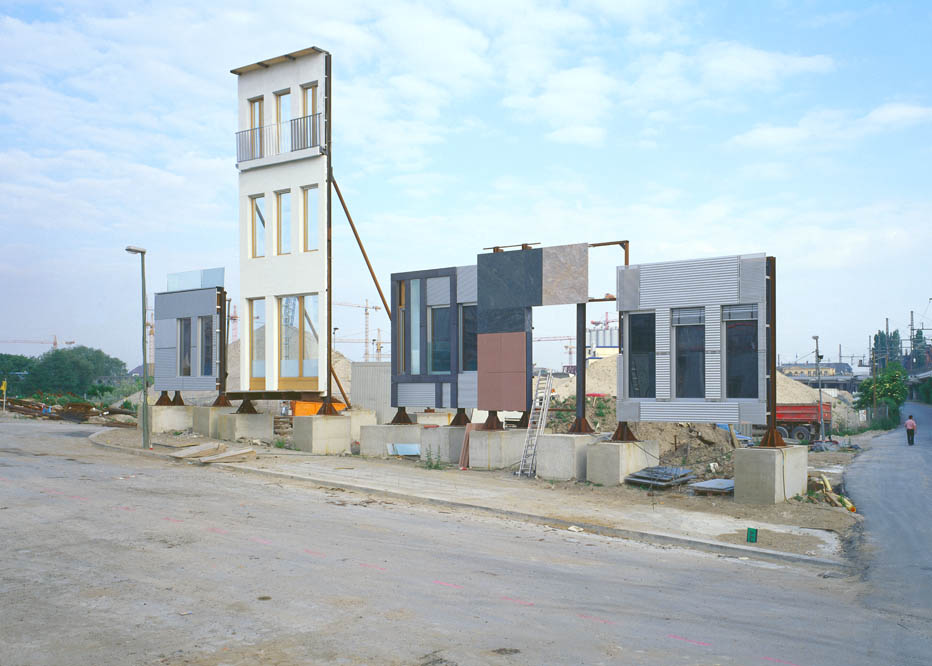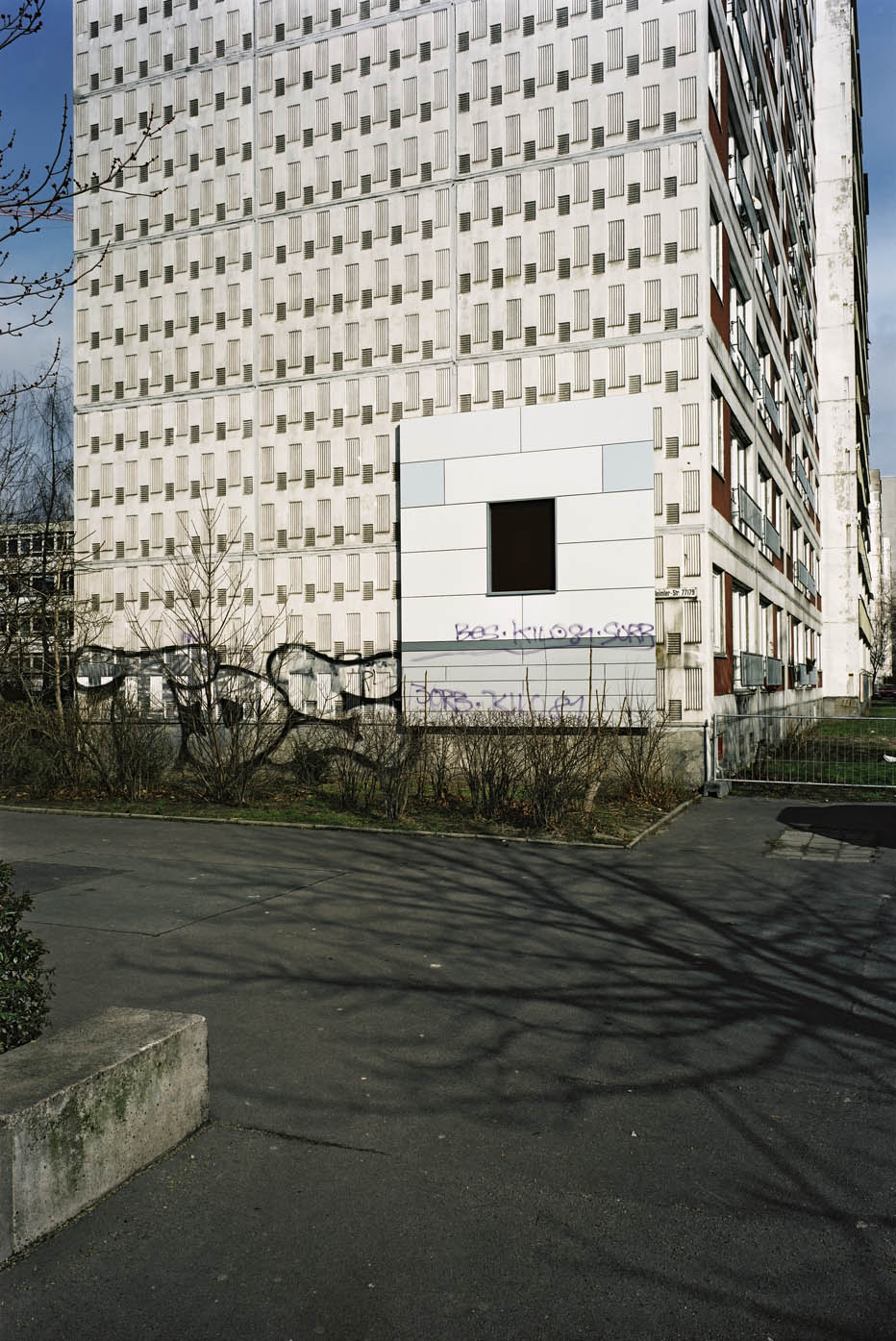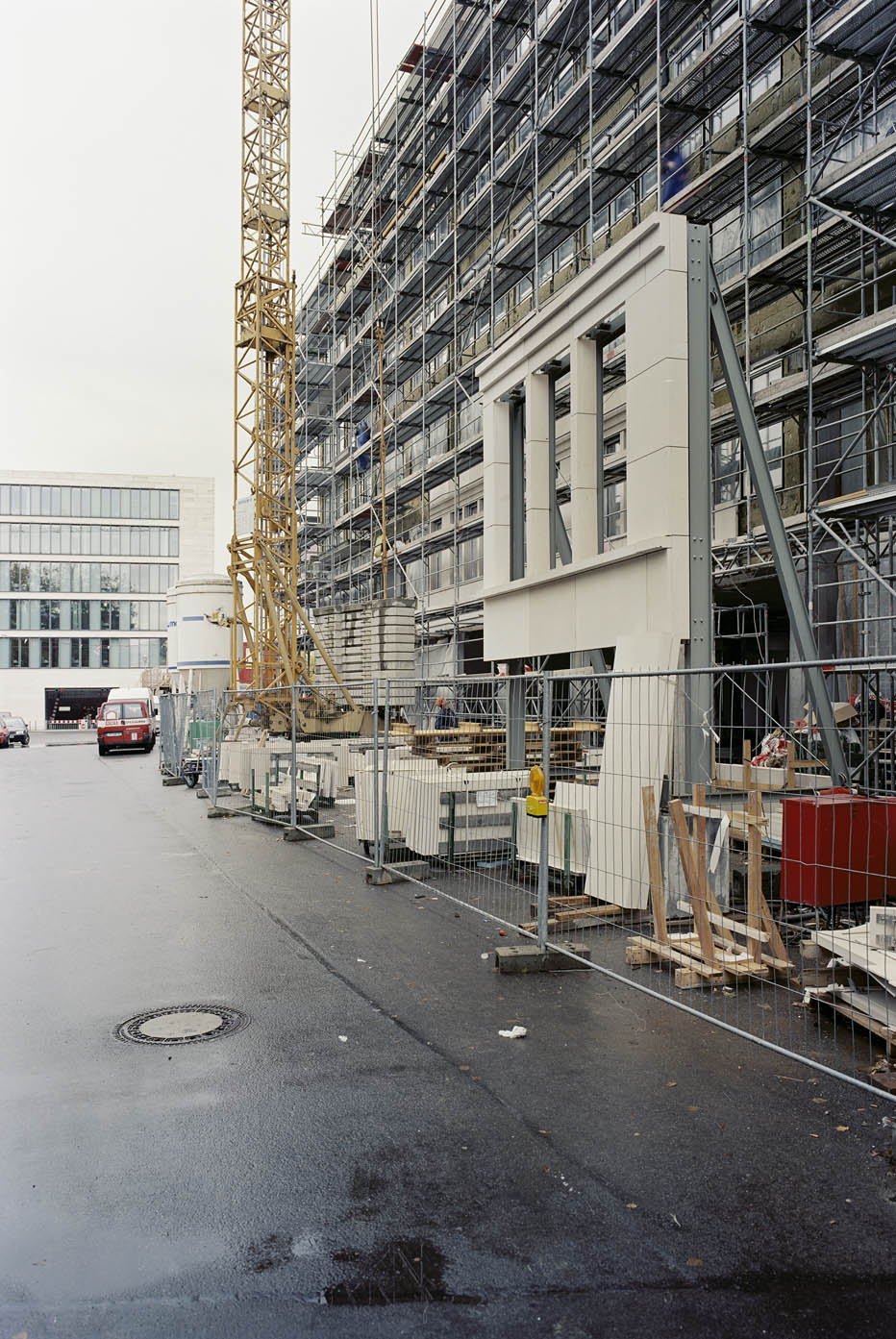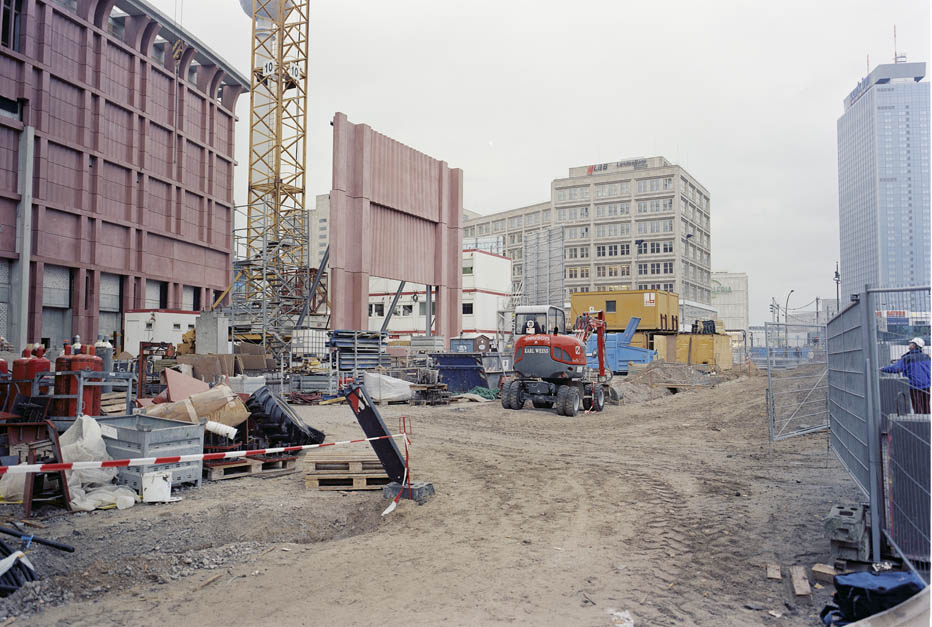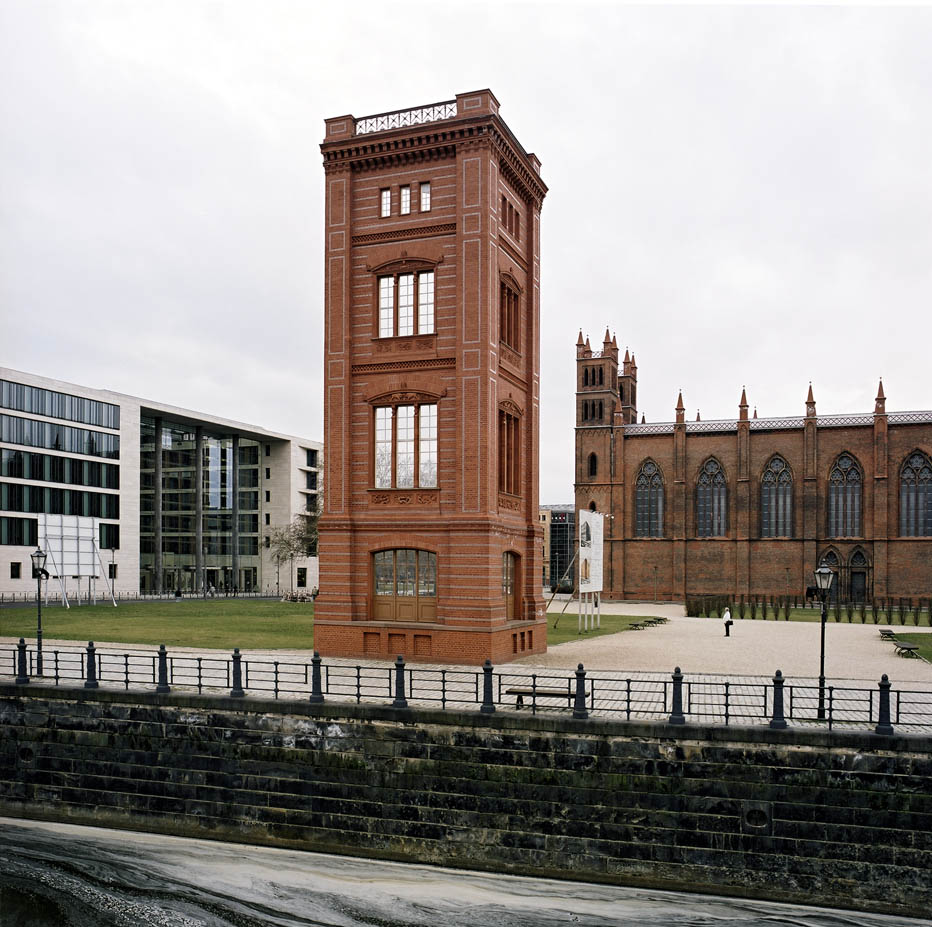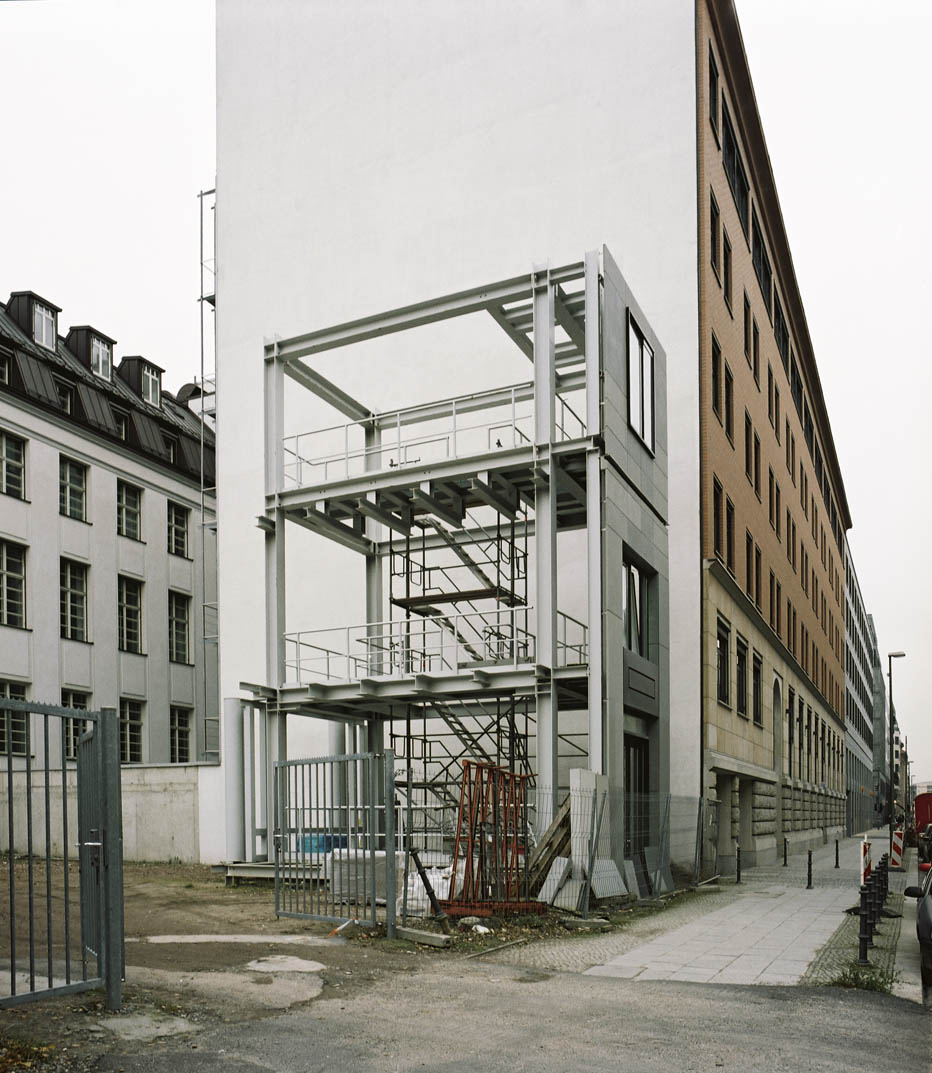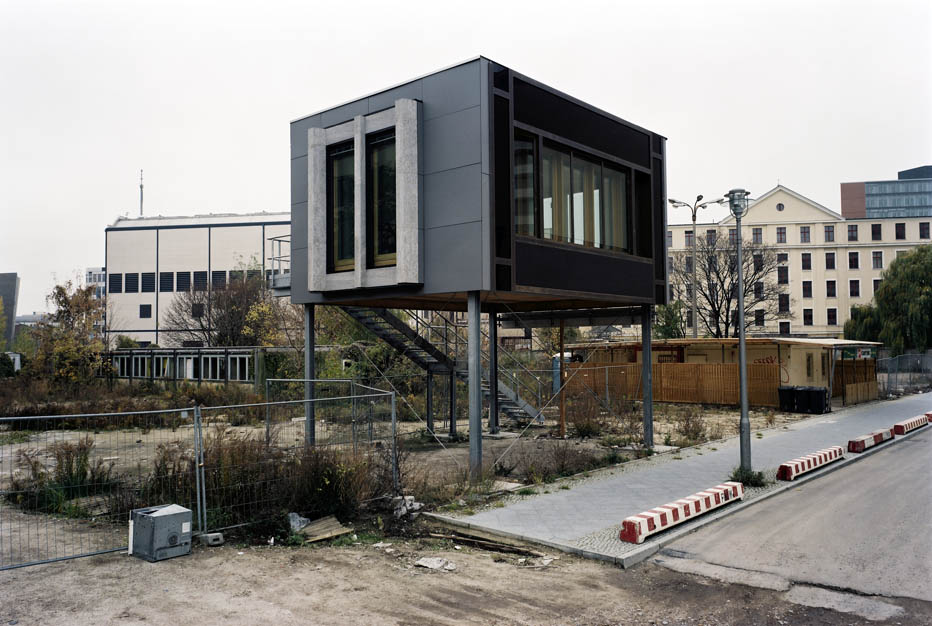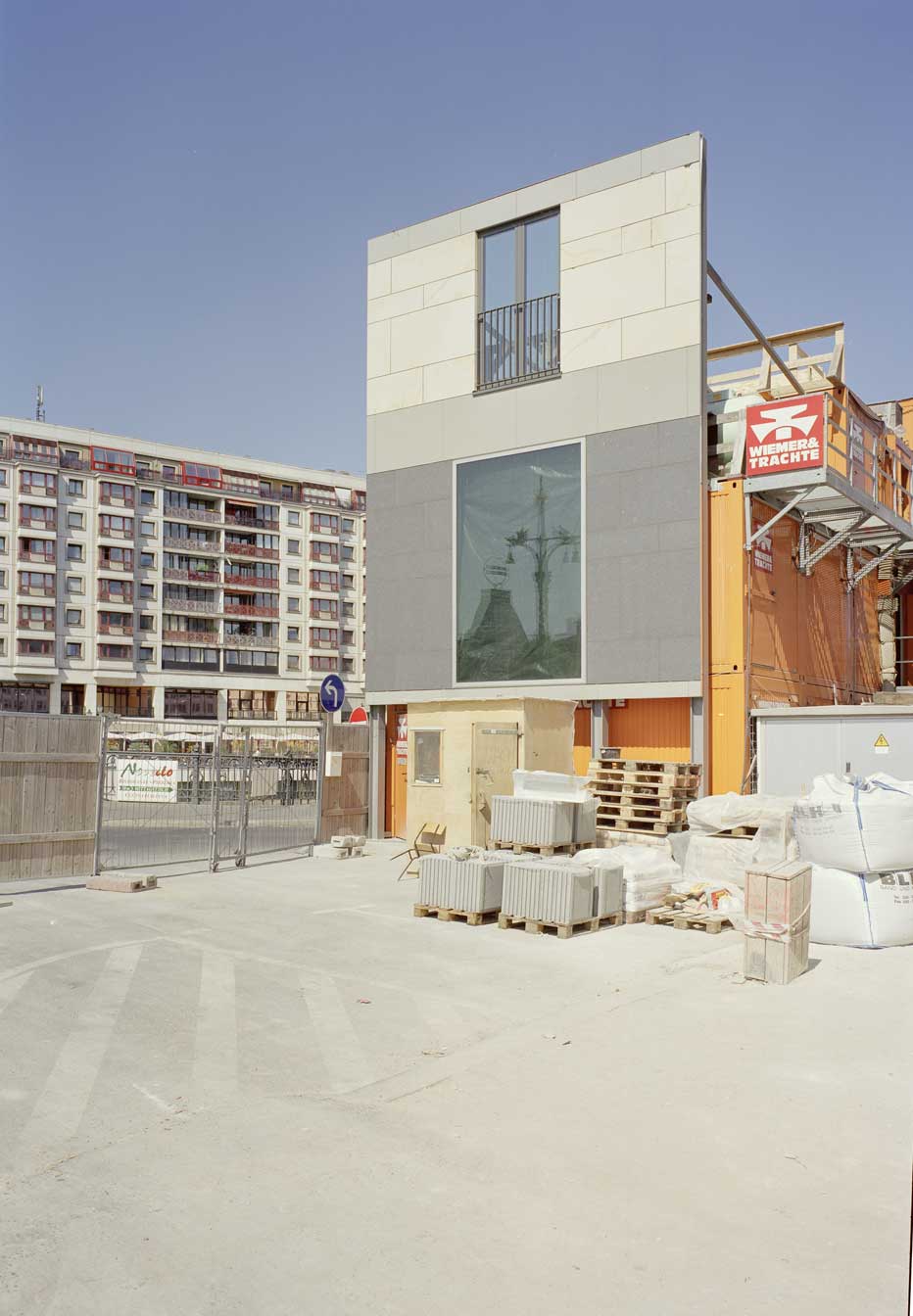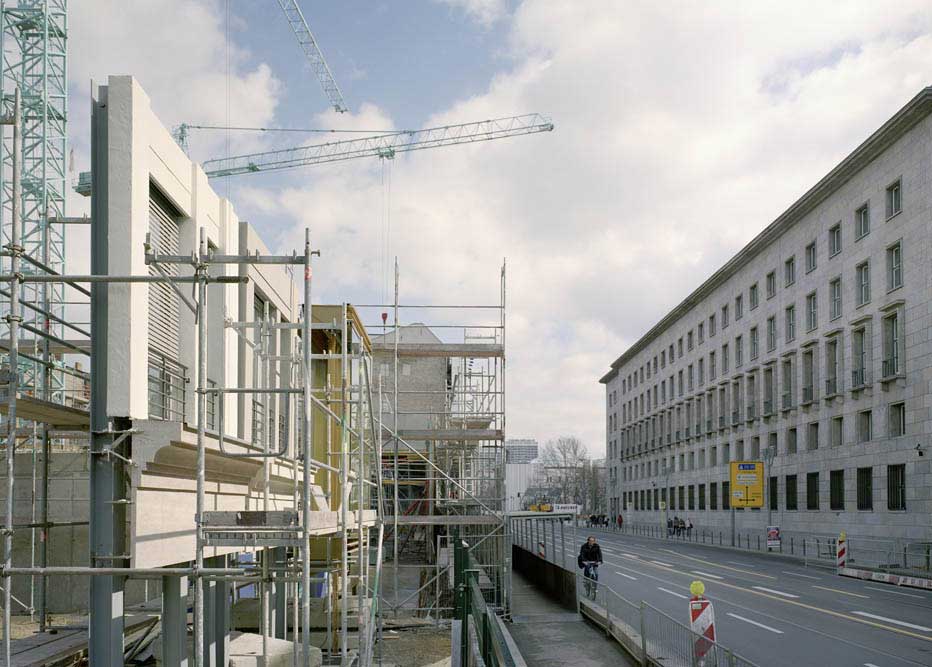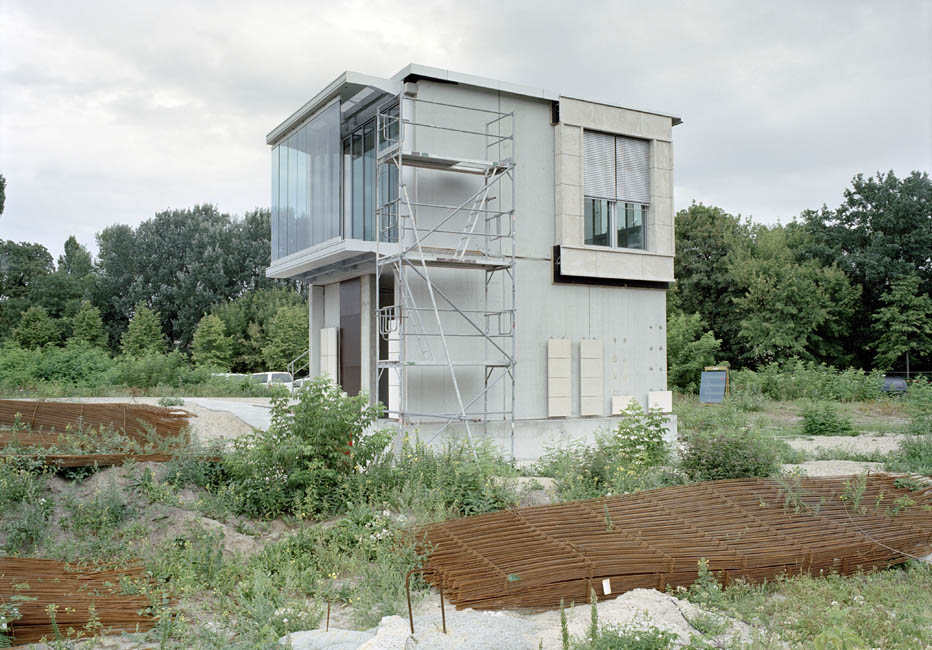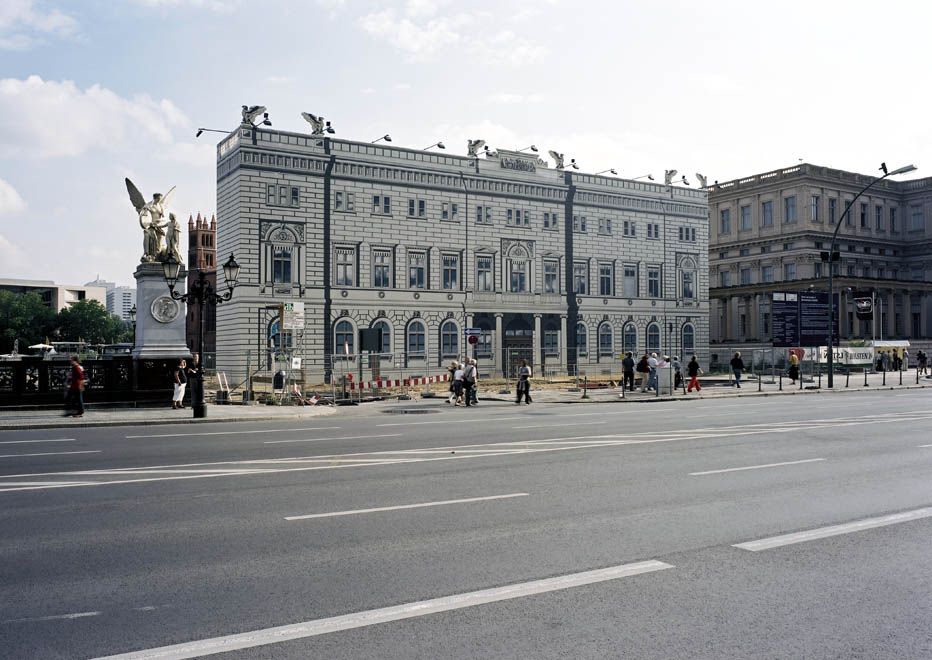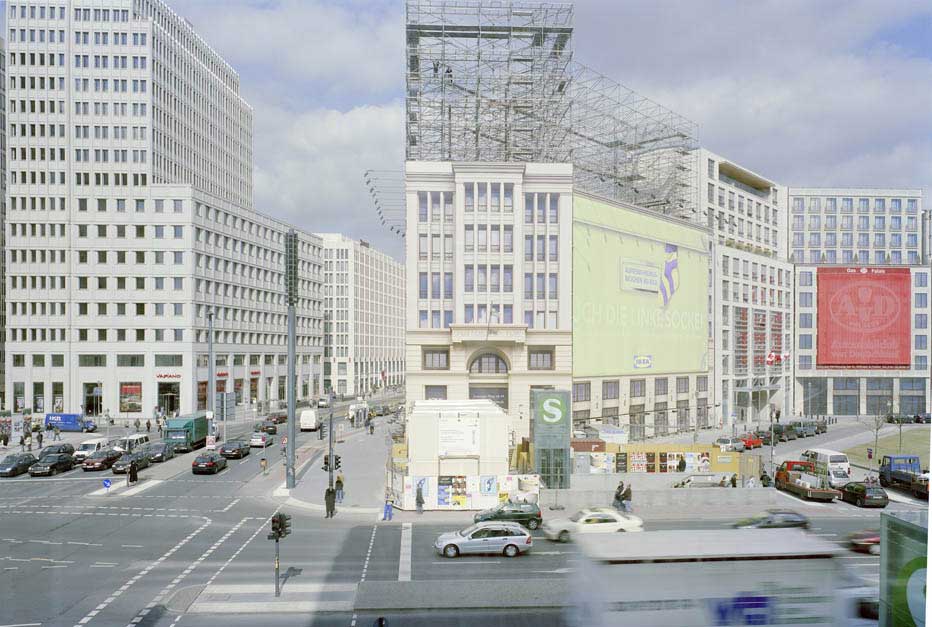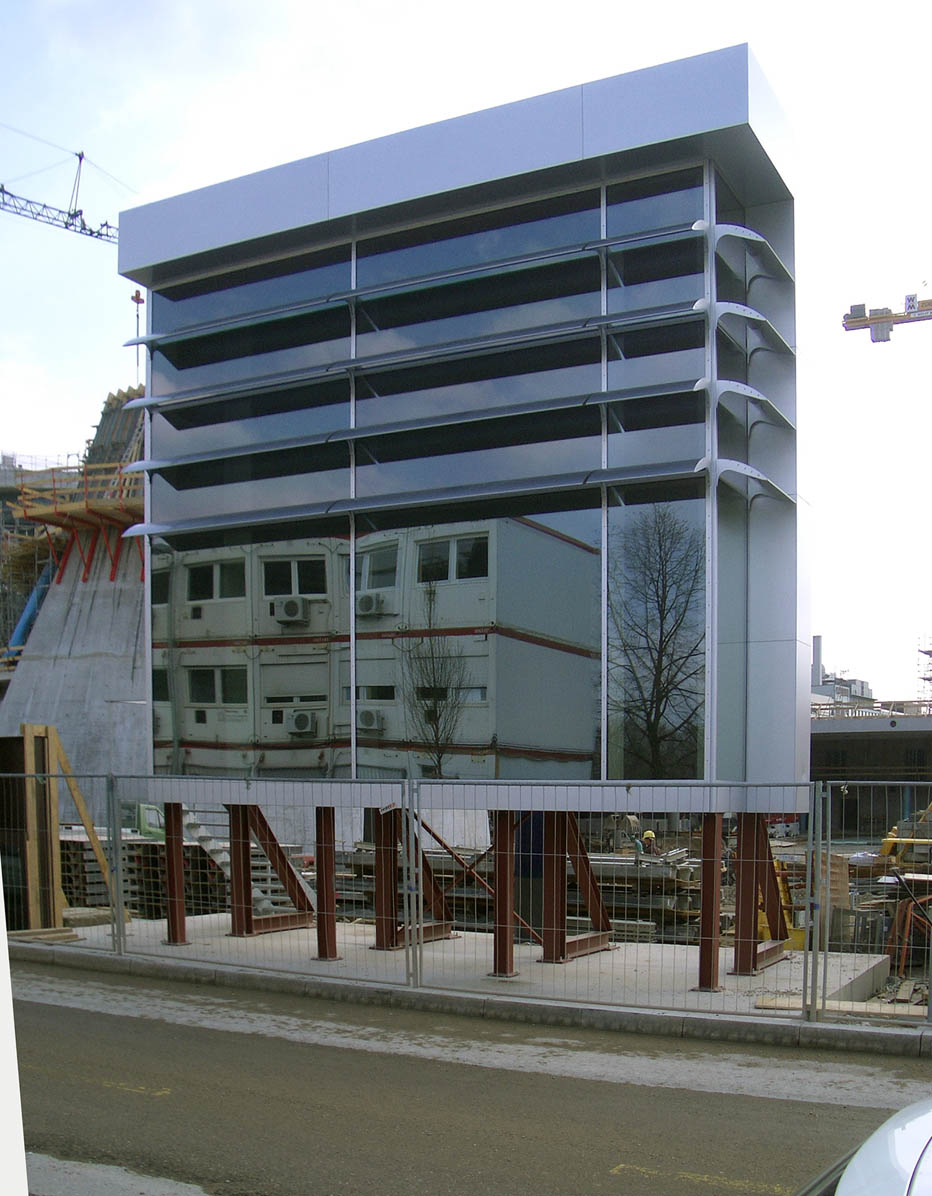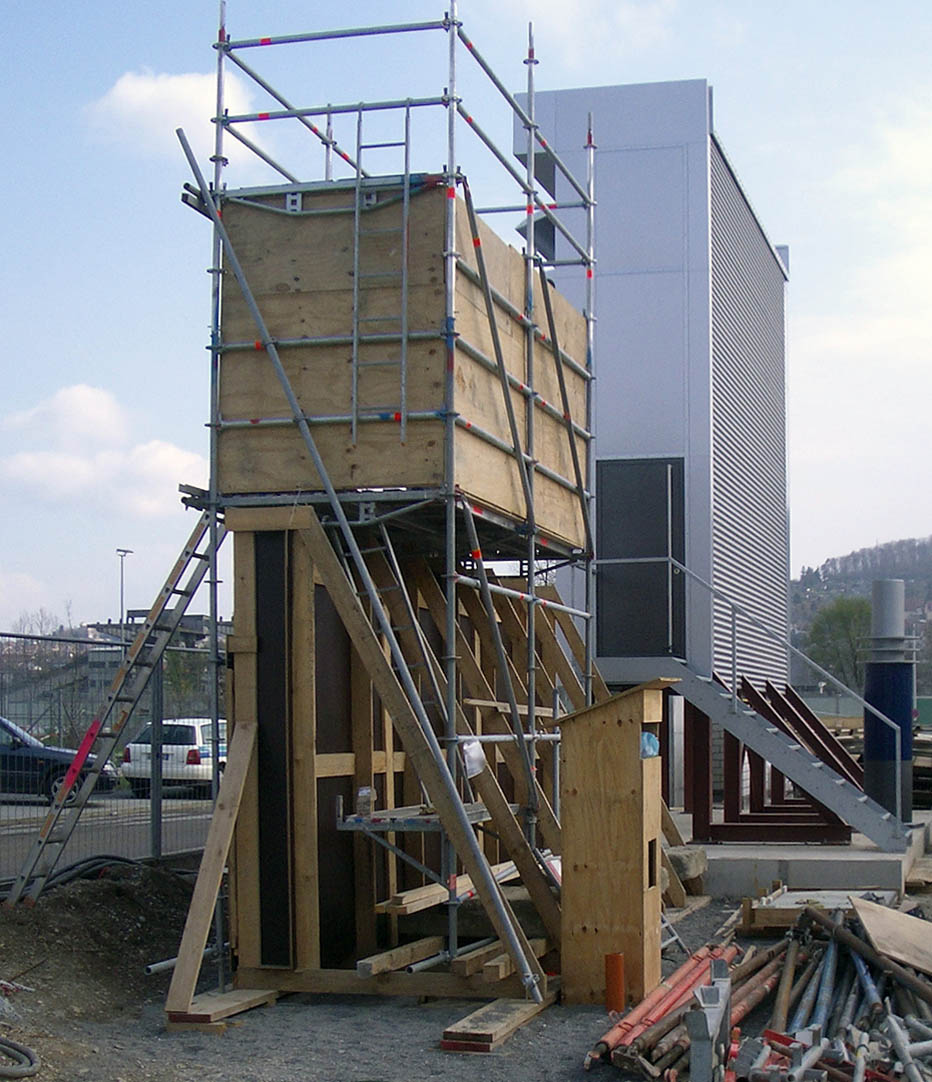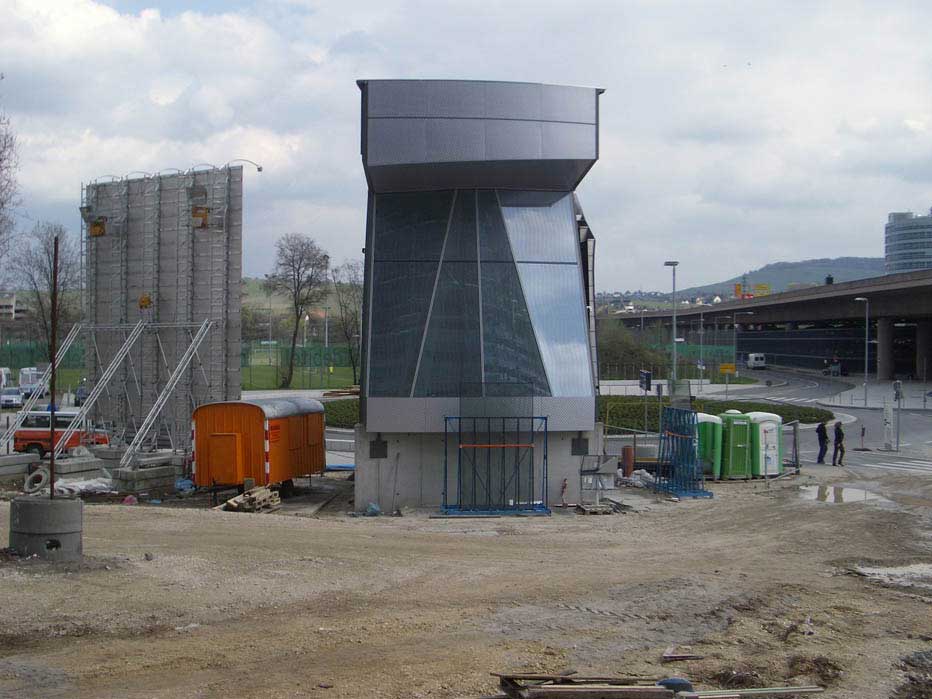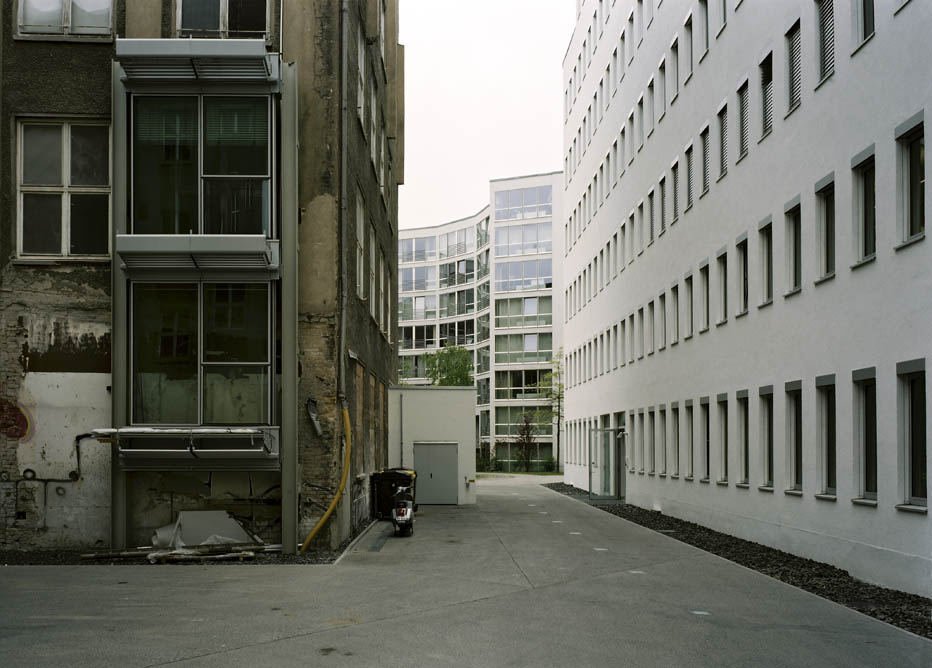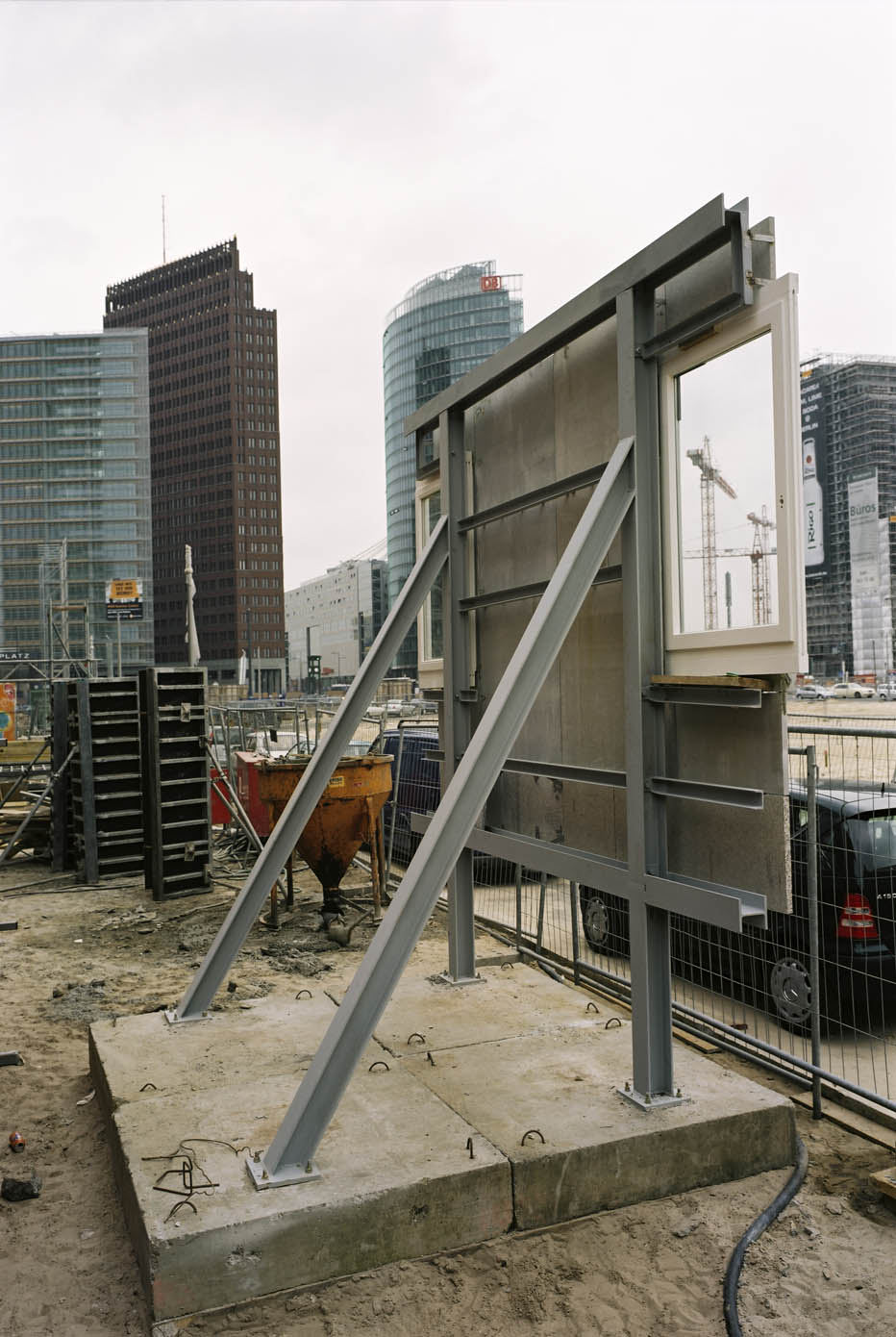Mock-Ups [ongoing]
Scenography and cityscape are intertwined. Temporary stagings in urban space can be identified as a temporarily stage or some kind of urban theater that imitate the theme of the city. Various scenographic techniques from the stage and their permanent application are applied to the built urban space in the form of façades as backdrops with theme-specific high-tech curtain walls.
The world as stage and construct
A dark geometric structure lands on narrow stilts like a UFO in a waste land. It is photographed from the corner and slightly below, a passerby’s perspective. On the right, a section of street hints at the opening up of the surrounding area, while in the background multi-story buildings reveal the urban context. A simple, fragile stairway construction ascends to the strange container-like building. From up here, the inner structure of this compact, model-like unit manifests itself. Stefanie Bürkle’s photography of facades and architectural elements–ones that seem to loiter in Berlin abandoned–may look like stage props, but they represent real structures. Her photographic staging at the level of reproduction is no accident. Having studied painting and set design, Bürkle’s artistic work has a multimedial commitment. In her work, the medium of photography possesses both a documentary quality, in which the external world is portrayed en detail, as well as an artistic life of its own.
Bürkle’s 1999 photograph at the construction site of the future Bundespressekonferenz shows different façade structures, which stand next to each other along the street like soldiers. In the foreground, a street lamp already (or still) stands at the edge of the sidewalk. We would be unable to find this place again today, for every square, meter of the center of Germany’s capital has undergone extensive regroupings and been given extensive regroupings and a variety of backdrops. The cranes in the background of the photograph were located in what was once Europe’s largest inner-city construction site – Potsdamer Platz. Forgotten today are the many discussions about how to utilize the area and their accompanying architectural concepts. What hasn’t been forgotten are the many who died trying to cross the wall that once ran through this section of the city.
The area around the mock-ups in Bürkle’s photograph was a no man’s land – a setting for long walks beside the wall archived in Wim Wenders’s Wings of Desire. Today, the temporary façade structures have been removed and urban planers have filled this place with new constructions. Yet before they did, architects and builders perused–for us–a full-scale model book for building exteriors. The life-sized models said something about surfaces and colors, materials and proportions. Their openings in the façade were vistas into nothingness; there was no closed-off area existing behind it. The mock-ups, some of which were three-stories high, were supported with stilts toward the back. In the third floor of one a balcony juts out with an iron grating. With these snap shots, Bürkle questions architecture’s claim to representation. Instead of the hectic goings-on of the construction site, she shows the contemplative calm of the margins.
Dr. Matthias Harder
